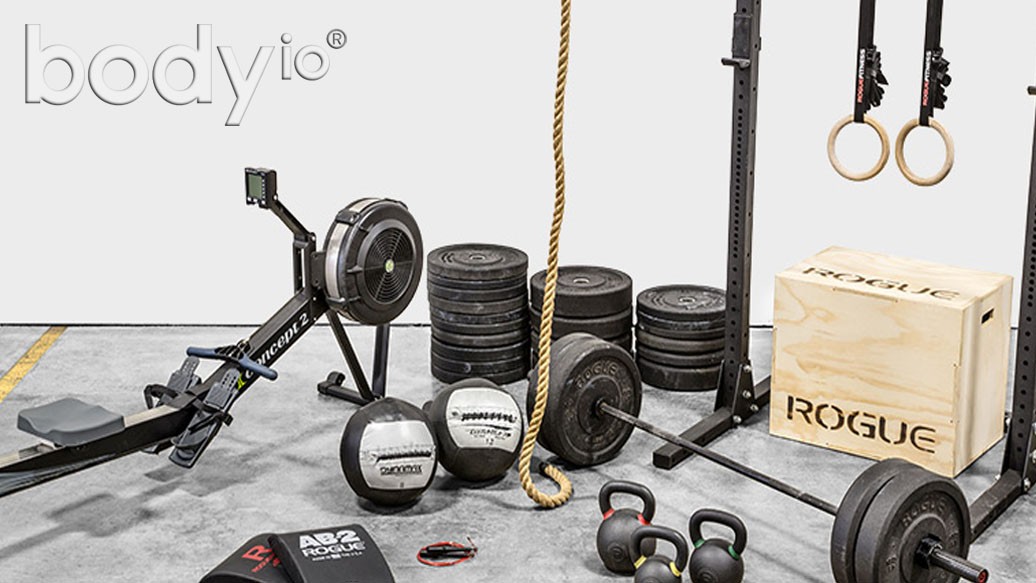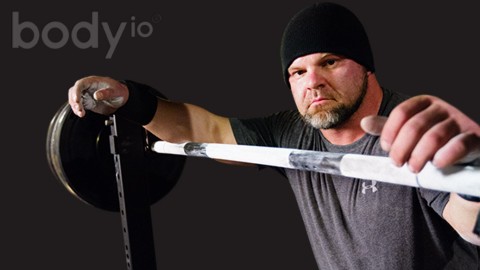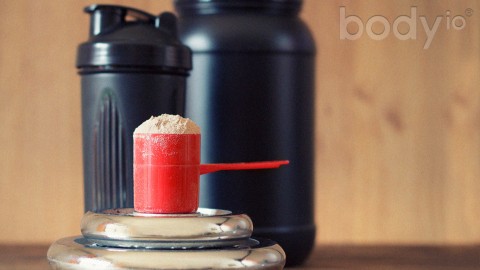ou’ve likely heard a lot about CrossFit, particularly about how it promises to make you a lean machine. That is, of course, if you’re not taking time out to recover from your CrossFit injuries. The popularity of CrossFit has led to the growth of nearly 5,000 affiliates worldwide[1], and the people who do CrossFit are enthusiastic about the program, sometimes approaching the level of being a fanatic[2]. A few of my friends have even tried to convert me. Valuing long-term mobility and health, I know enough about proper form to prevent injury, but injuries aside, is CrossFit really better for you than traditional resistance training?
You don’t have to do the research to answer that question on your own. I love exercise and research, and more importantly, I enjoy sharing my information so that others can maximize their health. As a person within the Independently Healthy pattern, PATH 8, fitness and exercise are a key part of my life. Seeking health-related information is also part of the PATH 8 profile. Chances are that if you’re reading this, you may be a PATH 7 or PATH 8—both of which are explained in detail in my book Pattern of Health. Now, let’s get back to CrossFit and whether or not it’s the best choice for me.
Using peer-reviewed research, this short article compares the documented health benefits of CrossFit with the results of more traditional resistance training/weightlifting. You’ll learn more about the impact that each has on fat loss, lean muscle mass, strength, bone mineral density, glycemic control, stress reduction, telomere length, and injury rate. Most of the reference sources were available on Google Scholar, so if you really want to dig into this subject, you can check the citations at the end.
The Evidence
Aerobic Fitness and Fat Loss
CrossFit-based high-intensity power training has been shown to improve maximal aerobic fitness and fat loss[3]. The CrossFit “Cindy” workout recently qualified as a “vigorous intensity” exercise[4]. Compared to resistance training or weightlifting, CrossFit delivers a superior aerobic effect. However, resistance training also promotes fat loss and the maintenance of non-fat body mass[5]. Together with a high-protein, low-calorie diet, resistance training versus non-resistance training delivers fat loss and favorable changes to body composition[6].
Lean Muscle Mass, Strength, and Bone Mineral Density
In a direct comparison between CrossFit and resistance training, resistance training delivered a greater benefit to the mean increase in muscular power and upper body muscular endurance in a 2012 study[7]. A 2013 study of elite senior athletes found that participation in highly competitive senior athletics, without additional resistance training, failed to have protective effects on bone mineral density[8]. While this study did not look at CrossFit specifically, the nature of the observed competitive athletics was similar. In contrast, resistance training has been shown to stop bone and lean muscle loss in aging adults[9].
Glycemic Control
Resistance training was associated with a significant improvement in insulin sensitivity, glycemic control, and lipid levels[10,11]. Relative to CrossFit, all I could find was a 2012 doctoral dissertation that found no effect on glycemic control after three days of CrossFit in a sample of overweight/obese adults[12].
Stress Reduction
A 2012 pilot study showed that twelve weeks of resistance training contributed to a decrease in perceived stress among women[13]. I could not find a peer-reviewed research study directly addressing the effect of CrossFiton stress reduction. However, a 2014 doctoral dissertation demonstrated changes in stress levels during the “Cindy” CrossFit workout, suggesting a benefit to this important health concern following the exercise[14].
Telomere Length
Telomere length has been suggested to have an association with longevity[15], whereas a recent study identified a relationship between telomere length and healthy versus unhealthy aging, as opposed to pure longevity or length of life[16]. Relative to resistance training, a 2008 study showed a positive relationship between strength/resistance training and telomere length as compared to telomere length of physically active adults who did not have resistance training. In fact, increasing deadlift and squat weight was correlated with skeletal muscle telomere length[17]. I could not find any studies examining telomere length in a specific correlation with CrossFit. However, the association of non-resistance/weightlifting levels of physical activity with telomere length showed mixed results. Mid- or high-intensity aerobic training for six months showed no impact on leukocyte telomere length in a 2008 study[18]. However, a 2012 study found a link between approximately 10 hours of moderate to high activity and longer telomeres among active versus sedentary women[19].
Injury Rate
Two recent studies identified resistance/weight training as being safe[20,21]. The latter study linked resistance training and weightlifting per 100 hours of training with injury rates of 0.0035 and 0.0017, respectively (injury rate per 1,000 hours between 0.035 and 0.017). In contrast, CrossFit has been associated with an injury rate of 3.5 per 1,000 hours of training[22]. That figure is 100 times higher than the injury rate of resistance training and about 206 times higher than weightlifting. A 2014 study of 386 CrossFit participants found an overall injury rate of 19.4 percent(75/386), with the most injuries occurring in the shoulders, lower back, and knees.
Conclusion
While there are still gaps in the research, based on what is available, it seems clear that resistance training/weightlifting delivers more overall documented health benefits as compared to CrossFit, in addition to a much lower risk of injury, according to peer-reviewed research. The conclusive point against CrossFit is the higher risk of injury. The lack of peer-reviewed research may make CrossFit seem like hype for some, even though so many others swear by it, but only time and more research will give us a full picture. Based on these facts and clear conclusions that can be drawn, I’ll stick to resistance training for the time being.
That being said, some of you will participate in and love CrossFit, no matter what research you may read, because it represents something more for you than being maximally fit and minimally injured. Stay tuned for an article from Body IO coach Chelssie Urankar on how to stay injury-free and how to best use Carb Backloading™ with your CrossFit regimen.
[expand title=”References (click to expand)”]
- Toledano, Joel. “How Fast is CrossFit Growing? The Chart Tells The Story” Tabata Times. Tabata Times Broadcasting & Media Production, 15 Nov. 2012. Web. 14 Mar 2015.
- Stoddard, Grant. “Inside the Cult of CrossFit” Men’s Health. Rodale Inc., 11 Oct. 2011. Web. 14 Mar 2015
- Smith, MM, Sommer, AJ, Starkoff, BE, and Devor, ST. Crossfit-based high-intensity power training improves maximal aerobic fitness and body composition. The Journal of Strength & Conditioning Research 27(11): 3159–3172, 2013.
- Kliszczewicz, Brian; SNARR, Ronald L; ESCO, Micheal R. Metabolic and Cardiovascular Response to the CrossFit Workout ‘Cindy’. Journal of Sport and Human Performance, [S.l.], v. 2, n. 2, nov. 2014.
- Hunter, G. R., Byrne, N. M., Sirikul, B., Fernández, J. R., Zuckerman, P. A., Darnell, B. E. and Gower, B. A., Resistance Training Conserves Fat-free Mass and Resting Energy Expenditure Following Weight Loss. Obesity, 16: 1045–1051, 2008.
- Wycherley, T. P., Noakes, M., Clifton, P. M., Cleanthous, X., Keogh, J. B., & Brinkworth, G. D. A high-protein diet with resistance exercise training improves weight loss and body composition in overweight and obese patients with type 2 diabetes. Diabetes Care, 33(5), 969-976, 2010.
- Barfield, J. P., Channell, B., Pugh, C., Tuck, M., & Pendel, D. Format of basic instruction program resistance training classes: effect on fitness change in college students. Physical Educator, 69(4), 325, 2012.
- McCrory, J. L., Salacinski, A. J., Sellhorst, S. E. H., & Greenspan, S. L. Competitive Athletic Participation, Thigh Muscle Strength, and Bone Density in Elite Senior Athletes and Controls. The Journal of Strength & Conditioning Research, 27(11), 3132-3141, 2013.
- Winters-stone, K., Dobek, J., Nail, L., Bennett, J. A., Leo, M. C., Naik, A., & Schwartz, A. Strength training stops bone loss and builds muscle in postmenopausal breast cancer survivors: A randomized, controlled trial. Breast Cancer Research and Treatment, 127(2), 447-56, 2011.
- Misra, A., Alappan, N. K., Vikram, N. K., Goel, K., Gupta, N., Mittal, K., Luthra, K. Effect of supervised progressive resistance-exercise training protocol on insulin sensitivity, glycemia, lipids, and body composition in Asian Indians with type 2 diabetes. Diabetes care, 31(7), 1282-1287, 2008.
- Braith, R. W., & Stewart, K. J. Resistance Exercise Training; Its Role in the Prevention of Cardiovascular Disease. Circulation, 113, 2642-2650, 2006.
- Patel, P. The influence of a crossfit exercise intervention on glucose control in overweight and obese adults (Doctoral dissertation, Kansas State University), 2012.
- Koplas, P. A., Shilling, A. E., & Harper, M. S. Reduction in perceived stress in healthy women older than 30 years following a 24-week resistance training program: A pilot study. Journal of Women’s Health Physical Therapy, 36(2), 90-101, 2012.
- Kaus, R. J. Affect and Enjoyment Associated with CrossFit Exercise (Doctoral dissertation, Bowling Green State University), 2014.
- Fossel, M., Blackburn, G., &Woynarowski, D. The Immortality Edge: Realize the Secrets of Your Telomeres for a Longer, Healthier Life. John Wiley & Sons, 2010.
- Njajou, O. T., Hsueh, W. C., Blackburn, E. H., Newman, A. B., Wu, S. H., Li, R., Cawthon, R. M. Association between telomere length, specific causes of death, and years of healthy life in health, aging, and body composition, a population-based cohort study. The Journals of Gerontology Series A: Biological Sciences and Medical Sciences, 64(8), 860-864, 2009.
- Kadi, F., Ponsot, E., Piehl-Aulin, K., Mackey, A., Kjaer, M. Holm, L. The Effects of Regular Strength Training on Telomere Length in Human Skeletal Muscle. Medicine & Science in Sports & Exercise, 40(1), 82-87, 2008.
- Shin, Y. A., Lee, J. H., Song, W., & Jun, T. W. Exercise training improves the antioxidant enzyme activity with no changes of telomere length. Mechanisms of ageing and development, 129(5), 254-260, 2008.
- Du, M., Prescott, J., Kraft, P., Han, J., Giovannucci, E., Hankinson, S. E., & De Vivo, I. Physical activity, sedentary behavior, and leukocyte telomere length in women. American journal of epidemiology, kwr330, 2012.
- Butragueño, J., Benito, P. J., & Maffulli, N. Injuries in strength training: review and practical application. European Journal of Human Movement, 32, 29-47, 2014.
- Faigenbaum, A. D., & Myer, G. D. Resistance training among young athletes: safety, efficacy and injury prevention effects. British journal of sports medicine, 44(1), 56-63, 2010.
- Hak, P. T., Hodzovic, E. & Hickey, B. The nature and prevalence of injury during CrossFit training. Journal of Strength and Conditioning Research / National Strength & Conditioning Association, PMID: 24276294, 2013.
[/expand]












